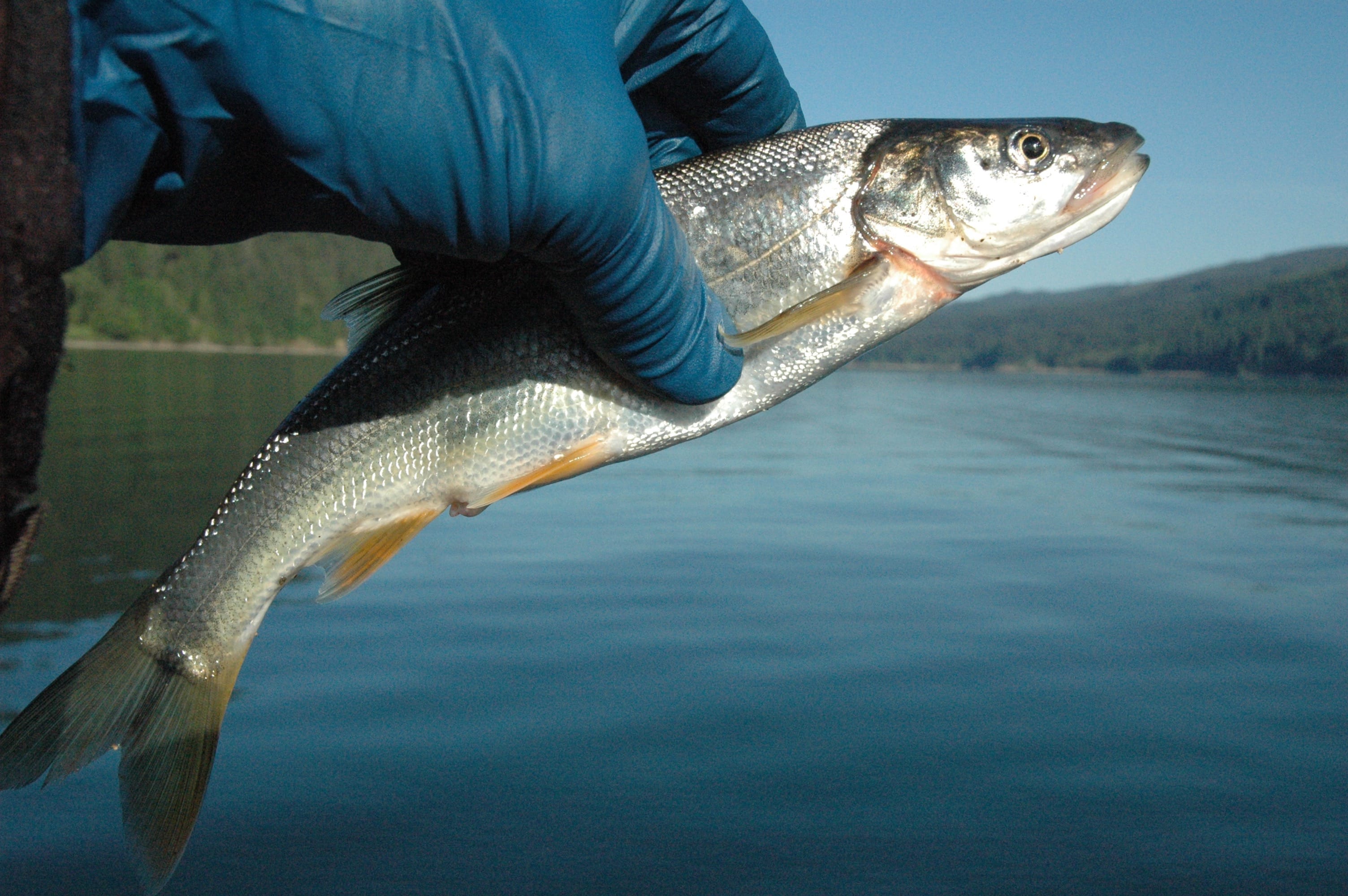ARIEL — A federal research biologist estimates Merwin Reservoir has more than 500,000 northern pikeminnow, with about 10,000 to 11,000 in the 12-inch size range.
The reservoir also has about 5,500 tiger muskies, according to Robert Al-Chokhachy of the U.S. Geological Survey, who recently conducted a research project with biologists from the University of Washington.
Al-Chokhachy is in the middle of several years of research on the North Fork of the Lewis River as part of the reintroduction of salmon and steelhead upstream of Merwin, Yale and Swift dams.
He presented an update on his research in April to the Lewis River Aquatic Coordination Committee.
The committee is a monthly meeting of PacifiCorp, state and federal fishery agencies, the Forest Service, Cowlitz PUD, Indian tribes and others involved in Lewis River management under the utility’s 2008 federal license to operate Merwin, Yale and Swift dams.
Al-Chokhachy said there are an estimated 544,000 northern pikeminnow between 8 inches and 12 inches and 10,000 to 11,000 larger than 12 inches.
The reservoir is stocked with an average of 1,340 young tiger muskies a year. Tiger muskies are a sterile cross between northern pike and muskellunge, both Midwest predator species.
Tiger muskies were introduced decades ago into Merwin to help control the pikeminnow population and provide a trophy fishery.
Although the tiger muskies prey on other fish species, they eat very few kokanee, Al-Chokhachy said.
Northern pikeminnow smaller than 12 inches eat primarily zooplankton and aquatic invertebrates, while pikeminnows larger than 12 inches will eat salmonids (salmon and trout) plus other pikeminnows and crayfish.
Kokanee are 14 percent of the pikeminnow diet in summer and 28 percent in fall, Al-Chokhachy said.
Todd Olson, PacifiCorp’s director of compliance for the Lewis River, said the pikeminnow population is about the same as estimates made in the 1960s, although it appears there are slightly fewer larger pikeminnow.




